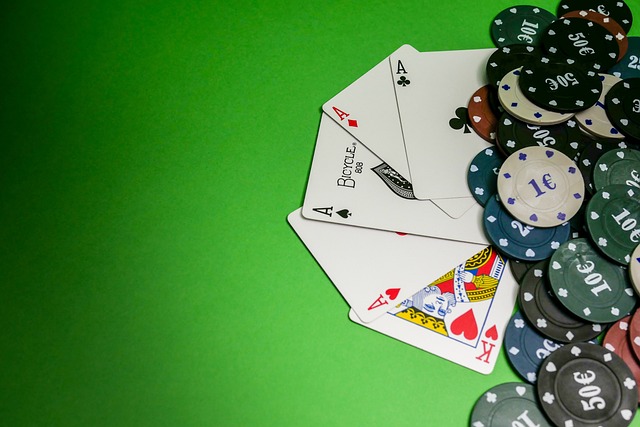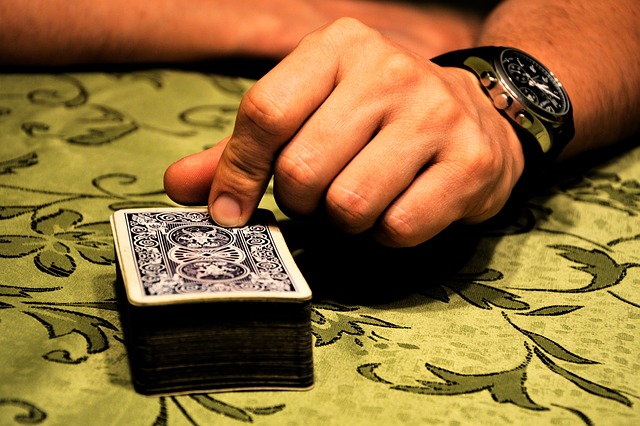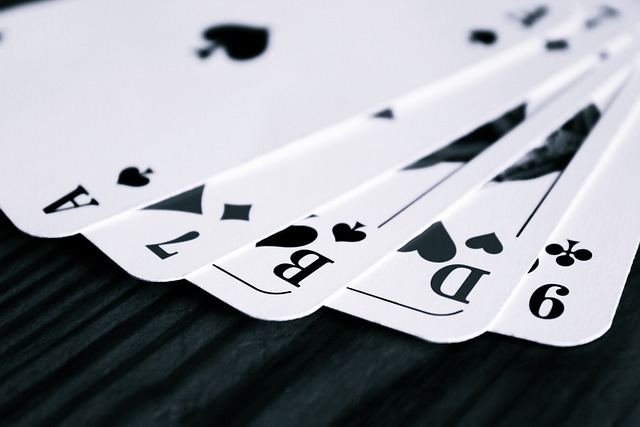The Guide to Counting Cards in Poker
by Ben Little

Counting poker cards has a very “movie” and epic connotation of the popular card game, but it is something very basic that you must control. Knowing how to count combos in poker can make the difference between a mediocre player and a good one, and between a good one and an excellent one. Do you want to know what it consists of?
Counting the cards in poker basically translates into knowing which cards with the cards in the deck that make you win, to later know the probabilities of winning with the outs. And what do we count? Basically it works for when we pursue a project. You’ll probably attribute that draw to a flush or a straight, but they’re not restricted to just epic hands.
If you have AQ, for example, counting the poker cards we would see which ones are worth us. With this count, we can later calculate the ‘outs’ and the ‘pot odds’ to make precise decisions, but first we must understand how to count. Let’s go, step by step, to see how the count is done.
How to learn to count cards in poker?
This technique is learned through practice, that is, by playing poker games while applying card counting. Being clear that there are 4 cards of each number, depending on the hand we are looking for, a reduced number of cards will be worth us, and it will help us discover the cards of the opponents.
Key facts for counting poker cards

Since we cannot know what the rivals have, when counting poker cards we will not differentiate them from hole cards. That is to say, a burned card, from the rival in play, folded or to be discovered will count in the same way. It’s not the most accurate, but in the long run it will work much better than mixing it with our palm reading. That would interfere with reading!
It could only be transferred to face-to-face poker to the fact that a card is shown by mistake, in this case we would discount it from the “cards to see” variable and also from the remaining cards. In general, when playing online poker we will not take it into account, since cards will not be discovered by mistake, and if a rival gives clues through the chat we will not believe it. It would not be a good idea to create a rival!
A deck of poker has 52 cards. When counting them we will exclude our two, that we already know, and those that we have already seen. Therefore, we will count over 47 after the flop and 46 when only the river remains.
There are 4 cards of each number. With which, if we look for a specific pair of a non-repeated card, we will be worth 3. If we have two different cards and both pairs are worth us, we have 6 cards that are worth us. If we have a couple and we go for three of a kind, we would only be worth 2, and 1 if we go for poker. This also goes for poker straights.
Do we make it complicated? If we have two pair and we go for the full house, we are worth 4 cards. If we have a three of a kind, after the flop we would also be worth 6, any of the two independent doubles.
13 cards of the same ‘color’. If we have 4 spades, we would be worth 9 cards, for example.
All of these stats are calculated on cards to be discovered, but the actual situation can vary greatly depending on what your opponents have. The standard “least bad” way to calculate is to match all unknown cards for the poker card count calculation: burn, discard, opponents, and out.
How are the cards counted?
The deck has 52 cards, which when we deal 2 and after the flop there are 47, those dealt to your rivals and those that remain in the deck. So we have two variables, the cards to see and the remaining ones.
I already know how to count the cards… and now what?
Being able to count the cards, we already have the ‘outs’. Do you have a flush draw and open straight after the flop? You have 15 outs (6 cards, 3 on each end, and all 9 flushes to see) in a total of 47 unknown cards. What doesn’t come out of what you want? Then you will still have 15 outs on 46 cards, but only one card to go. Starting with poker card counting, there are several formulas that work well:
If the result of the formula is lower than our odds, it is a good bet. A very quick formula to know the odds is the rule of 4 and 2. On the flop, multiply the ‘outs’ by 4, on the turn by 2. Do you have a flush draw on the flop? You are worth 9 cards, 36%. It is not complete for you, but does one of the stairs open up for you? We are worth 15 cards, with which we are left with 30%.
How hard is it to count cards?

It is not a guessing technique. It is an advanced mathematical system and counts as well as doing a great memory exercise, so it is not an easy method to do, but if you get it right it gives you an advantage over your opponents and the house.
Conclusion: Counting Poker Cards Plus Reading
Counting poker cards is necessary, but not enough. What do we mean? That maybe you don’t hit the color you were looking for, but you can win by high card if the opponent has nothing. You can get the trio, but the opponent can have a straight. With this, the sum of the reading of the hands of the rivals plus the counting of poker cards, may be enough.
In fact, counting poker cards will help you to have a picture of the situation, with which you will already pass in front of many rivals… but not all… Will you take a risk? The best way to practice poker card counting is to practice it.
Counting poker cards has a very “movie” and epic connotation of the popular card game, but it is something very basic that you must control. Knowing how to count combos in poker can make the difference between a mediocre player and a good one, and between a good one and an excellent one. Do you…